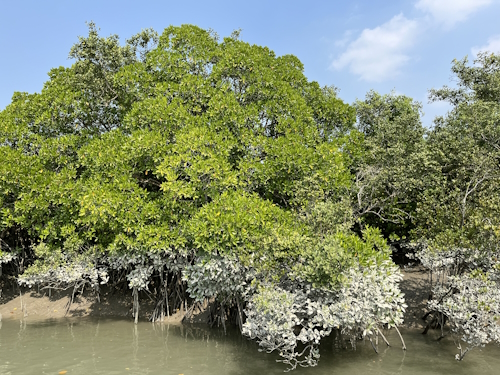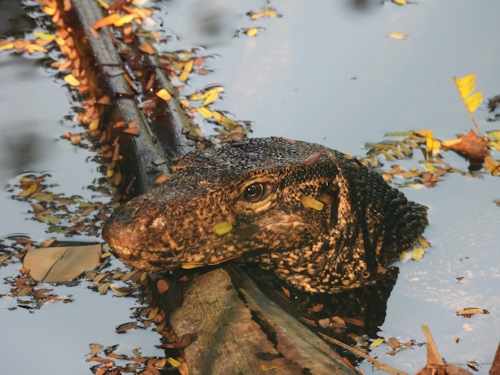Blog WHS Visits
WHS #936: Indian Sundarbans
As I had been to the Bangladeshi Sundarbans already in 2007, the visit to its Indian counterpart felt superfluous: this should be one transboundary WHS of course. And it felt even more like a chore because the visitor experience on the Indian side doesn’t come exactly recommended: I scouted for a “better” lodge to stay the night or a more imaginative tour, but all come with mixed reviews (or worse) online. So I settled for a private day trip from Kolkata. This one also suffered from poor communication beforehand, but fortunately, the logistics on the day itself worked perfectly.
A driver picked me up at 5 a.m. from my Kolkata hotel. The drive to Godhkali this early in the morning takes only 2h15 minutes (on the way back, it would be 3 hours). When you leave Kolkata’s city limits, the typical landscape dominated by creeks and channels begins.
In Godhkali, I was handed over like a postal package to a ferryman who put me on land at the next island, and on his turn delivered me to a waiting taxi that drove me in 15 minutes across the island to another dock. This is a densely inhabited island, it looked quite idyllic but it has suffered greatly from the devastating cyclone in 2020 and is also at risk due to rising water levels. It is protected by a low mud dike covered in plastic that looks very sketchy.
My private boat was waiting at the second dock – it came with a crew of what I first thought were two men but when breakfast suddenly appeared it turned out a woman was working in the kitchen downstairs as well. We first went to Sajnekhali to report to the park authorities. Here we also picked up a park guide, who doubled as general interpreter as he was the only one speaking English well. At the station, we had a quick look at the aquarium where they have a joint Indian-Bangladeshi breeding program for the critically endangered Northern River Terrapin.
From Sajnekhali, we then turned right. The guide said that most tourist boats go left – especially those with Indians as all they want to see are the two observation towers and take selfies with the plastic animals. We cruised along in all quietude, during the whole trip we only encountered one other tourist boat (with 2 foreigners on board). Weekends are the busiest days in the park, which is closed on Tuesdays.
The thing to observe here in the Sundarbans is how plants and animals have adapted to a life with brackish water and high tidal differences. It was funny to see the colour differences in the mangrove trees: the upper part is green, the lower part is whiteish indicating exactly up to where the water level rises daily (photo 1). Birds thrive in these surroundings (lots of branches to sit on and fish to catch), but the other animals had to adjust their “lifestyle”. Monkeys find few fruits here so they turn to anything edible (I saw one devouring a bird), and deer are known to eat crabs.
For the first hour, we navigated the part that locals may use for fishing. We saw several small boats at work. Nets fully encircle the protected zone: to prevent tigers from swimming to the inhabited islands. We then turned into the narrower creeks and into the 'tourist zone' where fishing is forbidden and the nets no longer obstructed views. It felt very pristine and I saw no rubbish floating around at all.
As time passed by (we were on the water for 5 hours) the water levels started rising, which made the observation of animals even more difficult as there were no mud banks left and the animals retreated into the thick mangrove forest. During the whole trip, we saw multiple groups of monkeys (rhesus macaques), two wild boar, and one spotted deer (photo 3: taken with a superzoom lens as it was deep in the bushes). Large monitor lizards (photo 2) were common, but crocodiles we only saw one.
Like all others who've shared their visits on this website, I only visited the buffer zone of the WHS as the core zone is a strict reserve aimed at tiger conservation. But there is a way to get closer to the core zone: at the Netidhopani Watch Tower. Visitors need a permit. It takes 4 hours from Sajnekhali by boat, so it's possible only for those staying overnight. This spot is also where the plaque is. Your chance of good wildlife sightings won't be significantly better, however; a tiger will stroll by once every 1-2 weeks.
Els - 24 November 2024


